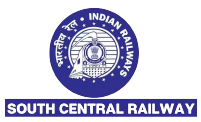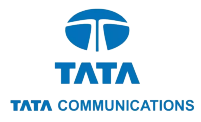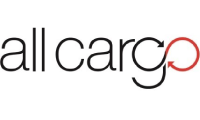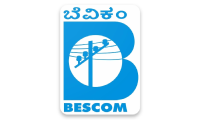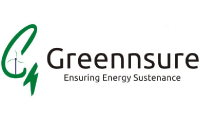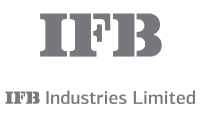Solar Savings + Land Tailored to the needs of SMEs Powering SMEs with Solar Bite-Sized Blocks of 1MW Solar Parks for SMEs Solar Solutions with Higher Returns
On a Mission to Power 10,000 SMEs in a Decade.
$85M
Value of projects in pipeline
10+MW
Capacity of repeat orders delivered
$9M
Value of projects currently under execution
$100M
Value of projects delivered
About Us
Dexler Energy is a leader in providing commercial solar and industrial solar power plant solutions, empowering businesses with sustainable energy alternatives. With over 120 MW of commercial solar power plant projects operational across India, we serve industries like textiles, steel, automotive, dairy, ITes, and FMCG. Additionally, we are developing 130 MW and executing 15 MW of projects in Karnataka, Tamil Nadu, and Maharashtra.
Our commercial solar panels and industrial solar plant solutions enable SMEs to become self-sufficient in their electricity needs, reducing energy costs while ensuring reliable power supply. Our commercial rooftop solar installations and ground-mounted plants have a lifespan of up to 25 years, with a potential payback in less than three years—providing near-zero-cost electricity for the rest of their operational life.
We are your Solar Energy Partners !!!
Empower Your Enterprise with
Modular Solar Parks:
Cost-effective, Scalable, & Future-proof Energy Solutions for Growth
Power Your Premises with
Solar Rooftop (100 kW – 1000 kW):
Design to Delivery: Complete Rooftop Solar Execution
Why Us
Our focus is to develop customized clean and green energy solutions which help our customers achieve their energy goals in a cost-effective manner.

Developed India’s first largest capex rooftop project in open access mode for a steel industry client.
First to build a rooftop project South Western Railways in Mysore.
First to build a solar merchant power plant in Karnataka.
First to enable an industrial manufacturer’s revenue to grow by 2x since the installation.
First to enable a steel company’s revenue grow by 20% in the first year of installation.
First to adopt single axis tracking technology in a merchant solar power plant in Karnataka.
First to develop Karnataka’s micro solar park for SME.
Our Clients
FAQs
What are the main components of solar power system?
Solar Modules and Inverters are the main components of a solar power system and they constitute 70% of the project cost
What is a solar PV (Photovoltaic) system and how does it work?
PV, short for Photovoltaic, derives its name from the process of converting light (‘photo’) directly into electricity (‘voltaic’). Simply put, a Solar PV system is a power station that generates electricity from sunlight. Solar Panels/Modules: Solar panels consist of a group of small cells made from semiconductor material. When the sun’s light falls on the modules, it excites the electrons, thereby creating direct current (DC). Storage Battery: The best use of solar energy is to consume it while it is being generated. If the requirement is to store this power and consume it in the non-sunny hours, then solar energy can be stored in batteries for later consumption Solar Inverter: The DC electricity goes into an inverter that converts it into alternating current (AC). We use AC for running our household or office or factory equipment.
What are the things I should think about if I am planning to go solar?
If you planning to install a solar plant, below are some things to consider:
• What are your energy demands? How do you consume the power?
• What is the availability of the shadow free area in your building?
• What is the business model you find more commercially viable (CAPEX or RESCO)
• What would be the savings if you go solar?
What do you mean by Open Access Power?
Open access power is a regulatory mechanism that allows a grid-connected bulk consumer with a contract demand of 1000 kVA or above to meet part of or all of their electricity requirements via alternate energy sources.
What are the various Open Access charges?
Open access charges under a utility-scale renewable project vary with location and procurement models. It is worth noting that renewable power plants under a captive or group captive model are generally exempted from many of these charges, varying by state. Various charges under the Open Access mechanism include the following:
- Transmission charges – The transmission charges are payable to the transmission company for using the transmission infrastructure.
- Wheeling charges – The wheeling charges are payable to the distribution company for using the distribution network. They are applicable to all power generating plants connected to the distribution grid at 33 kV or below and using Open Access.
- Transmission losses – These are the electricity losses in the transmission line between the point of generation and the point of consumption. Typically, these are in the range of 2% to 6%.
- Wheeling losses – These are the electricity losses incurred by the distribution network. They are determined by the State Electricity Regulatory Commissions (SERCs) for each buyer category and typically range between 4% and 10%.
- Cross-subsidy surcharge (CSS) – These are payable by commercial and industrial buyers to fund the tariff subsidy for agricultural and residential buyers. When a buyer opts for Open Access, the distribution company loses high-value income that would have subsidized low-income electricity users. CSS is designed to compensate for the lost subsidy.
- Additional surcharge (AS) – AS is imposed to recover the cost of standard assets when corporate buyers leave the distribution company and procure power through Open Access. The utility needs to prove to the regulator that assets are stranded to impose AS.
- Banking charges – Banking of power is when a developer can literally “store” the power generated by the utility if the buyer is unable to use the power at the time of generation. Methods of such electricity accounting vary from state to state, but broadly, it is either done on time-block basis (15 minutes to few hours or peak and non-peak hours) or on gross monthly basis. The state regulators set banking regulations allowing utilities to charge the generator for the banking facility and define periods during which the banked power may be withdrawn.
What are the challenges faced by utility-scale Open Access renewables?
Open access charges under a utility-scale renewable project vary with location and procurement models. It is worth noting that renewable power plants under a captive or group captive model are generally exempted from many of these charges, varying by state. Various charges under the Open Access mechanism include the following:
1. Contractual Challenges
- Tenor mismatch between PPA and loan : A new renewable energy plant typically requires debt with a tenor of 10 – 15 years. Some corporate buyers may be looking for short-term PPAs (as low as one year). Non-recourse financing will not be offered if there is a mismatch between the corporate buyer’s lock-in period and the developer’s debt tenor.
- Contract enforcement : To be able to finance a project, investors need to ensure that the proposed offtaker is bankable with strong and consistent financials. Solar and wind tariffs have rapidly declined in the last two years, creating a risk that corporate buyers may wish to renegotiate existing corporate PPAs. In contrast to solar rooftop projects, alternative corporate buyers for an off-site project may partially mitigate this risk. In that case, investors may ask for a payment security to cover the cost of transferring the contract to a new corporate buyer.
- Contract standardization : There are currently no regulatory guidelines or template contracts setting out common positions for all stakeholders of a corporate PPA. Corporate buyers and developers must agree on all contractual terms on a case-by-case basis – though some terms have informally become commonly taken positions. The absence of standard contracts increases the due diligence effort and raises costs for all the parties.
2. Operational Challenges
- Grid curtailment risk : Open Access projects are typically smaller than projects contracted by state-owned power distribution companies. They are often connected to state grids at 11/33 kV. As a result, there is a risk of grid unavailability. However, corporate buyers are not typically willing to take any grid availability risk. They may even want to impose penalties on the developer for power unavailability.
- Performance risk : The renewable energy sector has attracted an increased number of inexperienced entrants over the past years, primarily due to higher tariffs and tax benefits such as accelerated depreciation. There is a risk that such developers may compromise the project quality, which could result in lower generation, leading to penalties or even the termination of PPAs.
- Performance risk : The renewable energy sector has attracted an increased number of inexperienced entrants over the past years, primarily due to higher tariffs and tax benefits such as accelerated depreciation. There is a risk that such developers may compromise the project quality, which could result in lower generation, leading to penalties or even the termination of PPAs.
3. Regulatory Challenges
- Uncertainty around Open Access regulations and charges : Corporate buyers must pay Open Access charges to wheel power from the generation site to their premises. State regulators determine these charges periodically, so they are generally only valid for one to three years. As a result, corporate buyers cannot accurately budget for these charges beyond a couple of years. Furthermore, some charges, such as the Cross-subsidy surcharge (CSS) and the Additional surcharge (AS), can vary from one approval period to the next. Uncapped and unpredictable changes to Open Access charges discourage long-term corporate PPAs and investments in new capacity. As a recommendation, visibility for Open Access charges should be provided for 5 – 10 years. Alternatively, changes to such charges should be curbed or at least capped, particularly for existing projects with signed PPAs.
- Inconsistency in eligibility and operating criteria for Open Access : The SERCs in each Indian state frame the Open Access regulations applicable in their jurisdictions, while utilities prepare the relating operating procedures. There have been efforts by utilities and/or by central authorities to create standard processes across different states. The variation in eligibility criteria, application processes and electricity accounting across states makes it a difficult task for corporate buyers to own a PPA portfolio across India.
- Exclusion from Open Access : Most of the power consumers in India have a connected load of less than 1 MW and are ineligible to procure power through Open Access.
- The utilities point of view : Delay or refusal to grant Open Access permission by utilities can be due to lack of procedural knowledge at the local level or a commercial resistance due to potential loss of revenue as the corporate buyer is leaving the utility. It is a hurdle that corporate buyers and developers face regularly. The procedure for obtaining approvals should be clearly defined, training could be provided to local utility employees and regulations should be defined such that utilities are fairly compensated for the use of their network and have the flexibility to compete with private sector developers for sale of renewable power to corporate customers.
- Paper-based approval process : Open Access approval forms are often paper-based. A digital process would improve transparency in decision making and could improve process time. States could implement an online approval process that works across multiple states, utilities, system operators and regulators
Is my rooftop right for solar plant?
If your roof is not having any shade from any adjacent buildings, trees etc. and its structure is not delicate then your roof is suitable for solar plant. Solar plant can also be installed on car parks, open shade ground within your premises by erecting special mounting structures.
What is net metering?
Net Metering allows you to sell excess solar power back to the grid and thus results in maximizing the savings of the solar project.
Can I remove my grid electricity connection?
The plant will generate electricity only during the day time so during the night the electricity has to be sourced from the Grid. Secondly, solar electricity will meet only a part of your total electricity requirement, the remainder of which has to be met from the Grid.
What are the main components of solar power system?
Solar Modules and Inverters are the main components of a solar power system and they constitute 70% of the project cost
Which power procurement models can be used in Open Access?
Typically, two procurement models are used: third-party PPAs and captive or group captive models.
- Captive / Group Captive Model – In the captive model, the corporate buyer makes an upfront capital investment in the Open Access project. The buyer owns, operates, and maintains the power generating asset. Open access charges are also applicable but unpredictable charges, such as the cross-subsidy surcharge and additional surcharge, are waived off. In addition, the buyer (i.e., the owner of the power generating asset) is also eligible to claim tax benefits through accelerated depreciation. Another variant of the captive model is the group captive model, wherein the Open Access project is developed for collective usage by many corporate buyers. The model is considered group captive if at least one of the corporate buyers holds a minimum of 26% of equity in the project and consumes at least 51% of the power generated.
- Third-Party PPAs – In this model, a third-party investor or Solar developer invests in an Open Access project and sells the power to corporates via a PPA, eliminating upfront investment and Operation & Maintenance (O&M) responsibilities are at the developer’s end. However, the corporate buyer is liable to pay the Open Access charges incurred from the wheeling of power from the generated site to the buyer’s location.
What are the recommendations for corporate buyers while evaluating Open Access renewable PPAs?
The economic case for renewable PPAs is now sufficiently compelling to undertake the challenge of evaluating renewable procurement options and negotiating contracts. The recommendations for this are as follows:
- Due diligence based on company locations – Location influences economics and the risk profile of any renewable power procurement. Grid power tariffs, state-level regulations, Open Access charges, and renewable resources are all location specific and are important inputs for the commercial evaluation of a project.
- Understanding Open Access risks – For procuring power from a utility scale renewable project, a corporate buyer should evaluate whether access to the grid is possible at the location and if the Open Access charges are currently favorable. Corporate buyers should then aim to understand regulatory risks from changes in Open Access regulations and evaluate the impact of potential yearly changes to Open Access charges. Companies operating out of multiple locations across India should employ a state-specific strategy for renewable adoption.
- Due diligence on the developer – To ensure reliability and availability of power as per contracted terms, corporate buyers should carefully choose the developer of their corporate renewable PPA considering the developer’s experience in executing quality projects, assessing their long-term interest in operating power plants and judging their financial strength to build and operate these plants. Evaluating equipment for use in the project can reassure the corporate buyer during the plant development stage.
- PPA negotiation – Supply-demand dynamics make corporate PPAs a buyer’s market. This gives sufficient leverage to corporate buyers in negotiation. A competitive tender process and one-to-one negotiations can help reveal the cost of renewable power for a specific location. For a favorable location in India, it should be possible to realize a 20 – 30 percent cost discount as compared to grid power tariffs. From a corporate buyers’ perspective, the key to any PPA negotiation is to strike a balance between de-risking a project and discovering the lowest cost of power. In the past, PPAs negotiated only keeping in mind the lowest cost of power became unfinanceable for the developer and were never built. Similarly, a corporate buyer can use its leverage to negotiate terms (other than cost) expressly in its favor, but increased supplier risk can result in a higher tariff for the corporate buyer.







